Pool drains can get clogged from time to time. A clogged pool drain can be a stress to your pool cleaning system. It causes a strain to the pool pump (due to low water intake) preventing proper water circulation and down the road could cause permanent damage to your pool pump.
Removing large debris pieces visibly stuck on the drain hole might look like an easy solution. But will this completely clear your clogged main drain?
The positioning of the main drain at the pool bottom places it at risk of getting clogged from the buildup of debris and harmful algae. It is thus important to regularly clean and monitor the main drain to keep your pool in the best shape it can be.
So what causes the pool main drain to clog and what should you do to fix the problem? This article helps us to explore possible symptoms of clogged pool drain and how to effectively clear it out.
Article Contents
Understanding Pool Main Drains
A vital component in pool filtration, the main drain allows the circulation of water. The main drain is also connected to the pool filter. Most pool owners prefer filtration via the skimmer. However, the main drain can allow for more flow of water into the filtration system. This will maximize bottom-to-top water circulation.
The main drain location is at the deepest point of the pool and provides the best leeway to drain out your pool. Drains are covered with grates to divert the flow of water. This prevents dangerous suction, which could draw a person to a drain and hold them there. The grate also minimizes debris from being sucked in.
Most pools have a single main drain but larger ones may have multiple drains at the pool bottom.
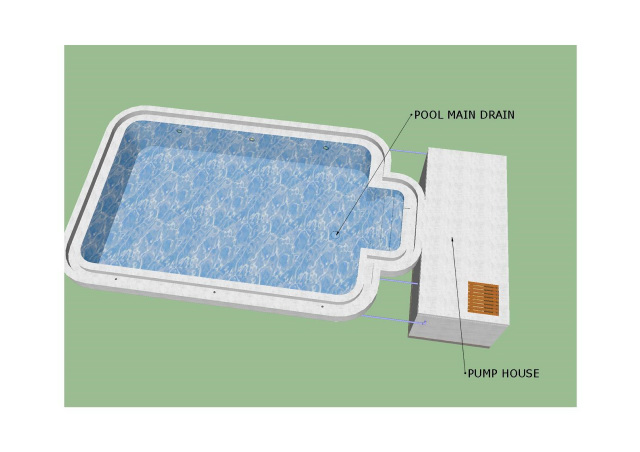
What Causes a Clogged Main Drain?
Debris is the largest contributor to a clogged drain.
The main debris source could be large leaves and tree twigs from trees surrounding your pool. They get blown in the pool following the wind. They then sink and find their way into the drain.
By skimming regularly, you can avoid debris settling at the bottom of the pool.
Other debris sources include:
- flower petals,
- pollen,
- hair strands,
- garbage,
- earth and rock particles
Some of these matters harden up and completely block the drain line while others could provide a conducive environment for the breeding of harmful bacteria.
Other possible causes would be the buildup of pool cleaning chemical components in the main drain duct.
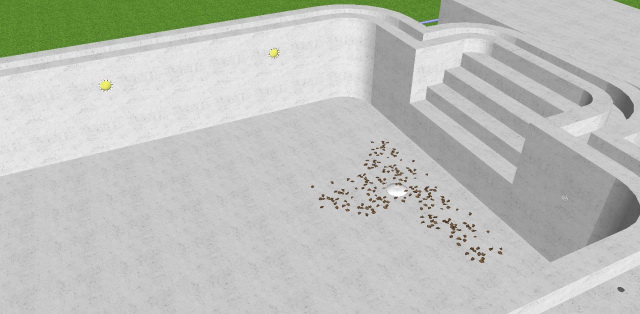
Why Does My Pool Drain Keep Getting Clogged?
Most pool drains are built with a short radius elbow. As opposed to house plumbing which uses 90-degree “sweeps”, pools use 90-degree elbows. These tight elbows can easily get clogged by any debris that flows past a dislodged strainer basket, increasing the risk of stuck debris.
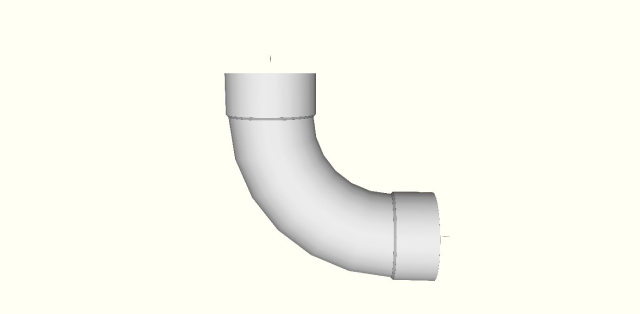
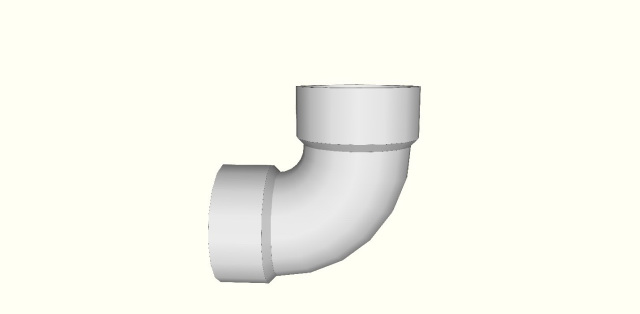
But this isn’t the real reason your drain keeps getting clogged. In all likelihood, its excessive debris in the water is caused by lack of maintenance:
- Not skimming enough
- Not vacuuming enough
If your pool is surrounded by trees, then you’ll need to pay extra attention to skimming and vacuuming your pool. Using a pool cover will help keep out debris too.
A scoop net is the best thing to skim your pool.
- Collect leaves, sticks, petals, dead insects & more
- Fits standard size (1-1/4") telescopic pool poles
- Deep bag to collect more debris
You may also check out our article How to Clean a Pool: A Time Saving Guide for a time-saving guide on how and when to clean your pool.
How Do You Diagnose a Clogged Main Drain?
The most common way to tell if your main drain is clogged is the visible presence of bubbles emanating from the drain.
Other signs would be:
- Hearing gurgling sounds coming from one or more of your main drains.
- Your pool pump is pulsing or surging (low water flow strains the pump and can alter the normal hum of your pump)
- The pressure reading on the filter gauge is low but the pump is unusually loud (the pump is struggling to create enough vacuum to suction in water).
- With the pump on and the valve to the main drain open, drop some fine dust around it, it should get sucked up if there is no blockage.
To single out the problem of the main drain clog, you’ll need to do some testing on your lines.
With the pool pump running, select different lines using the valves on the pipes (not the multiport valve). Note the water flow in the pump window.
Now shut down all the suction lines but the main drain, if it is clogged, you will see a noticeable decrease of water flow through the pump’s strainer cover window.
How to Clear a Clogged Main Pool Drain
Let’s look at how you can unclog and clear your pool’s main drain without having to drain your pool.
Prevention is better than cure. Like I said earlier, regular skimming of your pool will prevent your main drain from getting blocked in the first place. This first line of defense is ensuring leaves and debris don’t find their way down the drain.
Here’s the steps to clean a blocked up pool drain:
1. Clean Out the Drain Grate
Turn off the pump first. Then remove any debris stuck in the drain grate by hand.
However, if you notice the pool pump is still straining after performing the cleanout then the problem is deep beyond the drain grate. A thorough cleaning will be needed to sort out the clog.
2. Remove the Drain Cover
Undo the screws on the cover.
If your drain has a strainer basket, remove it and clean it out. Make sure the pump is off first.
Now reach into the drain and try to feel for a blockage. Try using a long screwdriver or similar tool to get right in there. Remove any debris.
Switch the pump back on. Without the drain cover, there will be stronger suction in the drain line. This might be enough to clear the blockage. In which case you can turn off the pump and reinstall the grill.
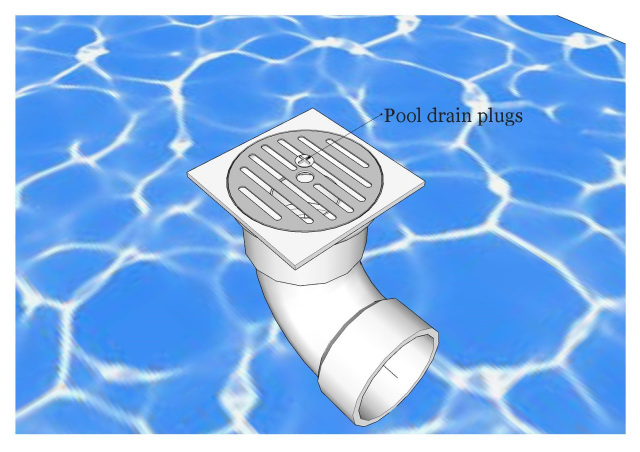
3. Use a Pool Plunger
The next step is to use a plunger. This suction can be enough to release anything that might still be trapped in the drain.
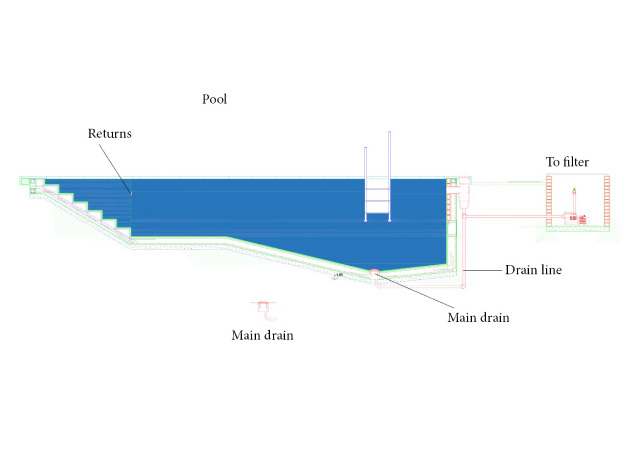
4. Drain Snake
This is a tool plumbers use to clear pipes. It’s a very long flexible metal hose that’s inserted into the drain. It’s pushed in until the blockage is found. Then it’s moved around, hopefully dislodging the blockage.
The fact that main drain lines are made of 90-degree elbows makes it hard to maneuver the plumbing snake though. The elbow increases the risk of the drain snake getting stuck in the line thus it may not be an ideal choice to unclog a pool drain.
If you do go this way, you’ll need a breathing hose or scuba gear to attempt this one.
Here’s a drain snake that will help unblock your pool’s drain:
- Unblocks difficult clogs in pool lines, kitchen sinks, bathrooms
- 25 ft flexible steel wire for long reach
- Save money on a plumber
5. Use a Drain King
This is an extreme measure and it’s probably best to call in the professionals if you’re considering this. It would mean you drain out your pool to work at the bottom drain. Before draining your pool, you should consult a professional as large damages can occur if done incorrectly.
Here’s how to use a Drain King. After shutting off the pump;
- Unscrew the drain cover(ensure no one is in the pool as the suction may be too strong)
- close down all of the valves to the other pipes to focus the pressure on the clogged main drain line.
- Go to the pump, open up the lid, and jam the Drain King into the intake pipe.
- Turn on the water supply to the hose where the drain king is attached and allow it to run for a couple of minutes.
- Watch as the debris gets blown out.
- Stand back and watch the debris get blown back into the pool.
- Once done attach back the drain cover.
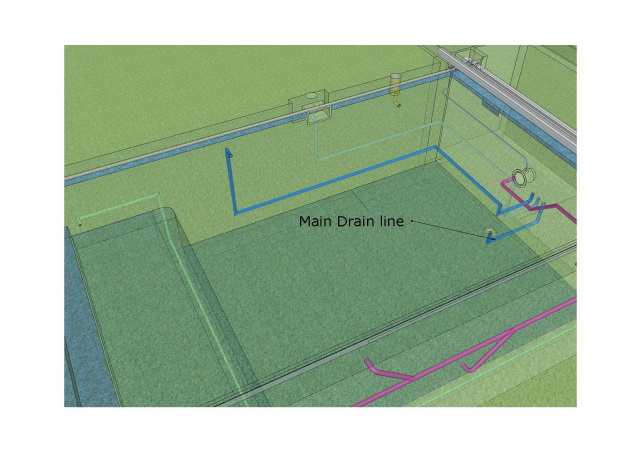
What is a Drain King?
Drain Kings are heavy-duty rubber expansion balloons that create a seal that forces the water out in only one direction. One end is inserted into a clogged drain and the other to a garden horse.
Once the pool pump is turned to circulate the water, the bladder builds up water pressure and it expands inside the drain to encompass the entire drain line diameter.
It then shoots the pressurized water down the drain until the clog has cleared. The balloon-like piece on the end of the device will prevent the water from moving back into the drain.
- Easily unblock pool lines, kitchen sinks, showers & more
- Attaches to a garden hose
- Suitable for 1-1/2 inch to 3 inch diameter drains
How to Unclog an Intex Pool Drain
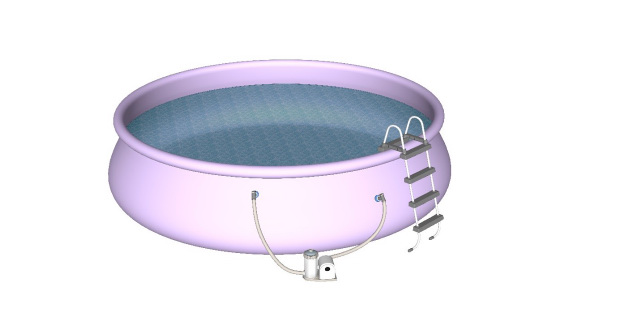
Start by employing some of the methods listed above. If they don’t work, a complete drain of the pool may be required.
- Locate the drain valve on the outside of the pool and remove the cap.
- Place a hose on the ground with the female end lying near the drain valve and the male end in an area where water can safely be emptied.
- Attach drain plug connector to the hose and screw into the drain valve. Water will start to drain.
- Once all the water that can be drained using the hose has emptied, flip the pool over to empty the rest of the water
- Blow through your pipes to ensure everything is cleared out.
- Fill up the pool.
Future clogs can be prevented by routine maintenance of the pool. Regularly empty the skimmer basket. Make sure that you remove the debris every day and especially after a storm. An investment in skimmer socks would provide you with a double defense to your pool lines.
Skimmer socks like this one prevent fine particles from getting into your filtration system.
- Have clearer cleaner water
- Catches debris that pass through the filter
- Will collect hair, dust, leaves & more
Also, run the pump and filter and clean the filter regularly as recommended by the manufacturer.
Our article Problem Free Pool Maintenance And Time-Saving Tips! will help you on how to regularly and efficiently maintain your pool.





